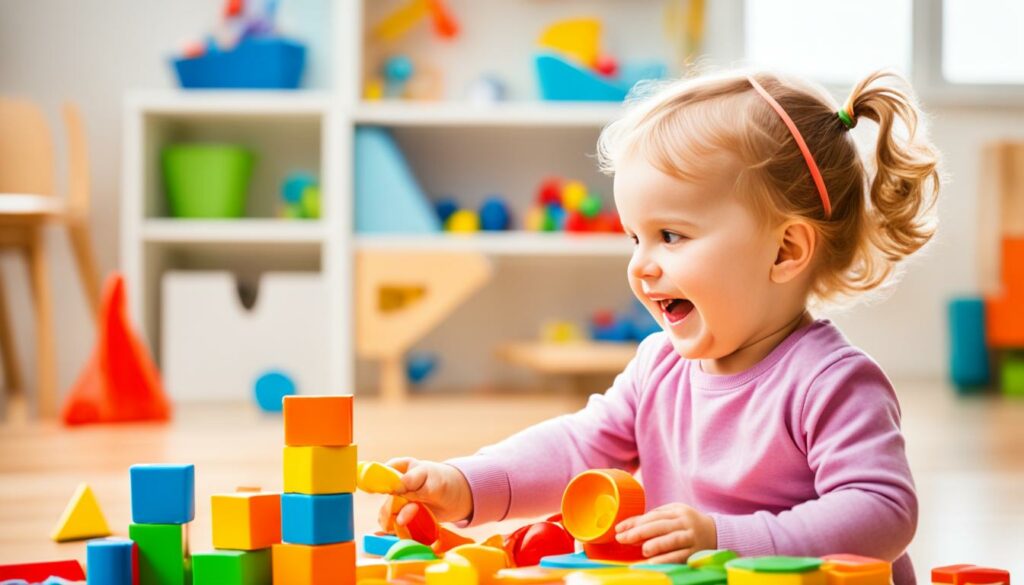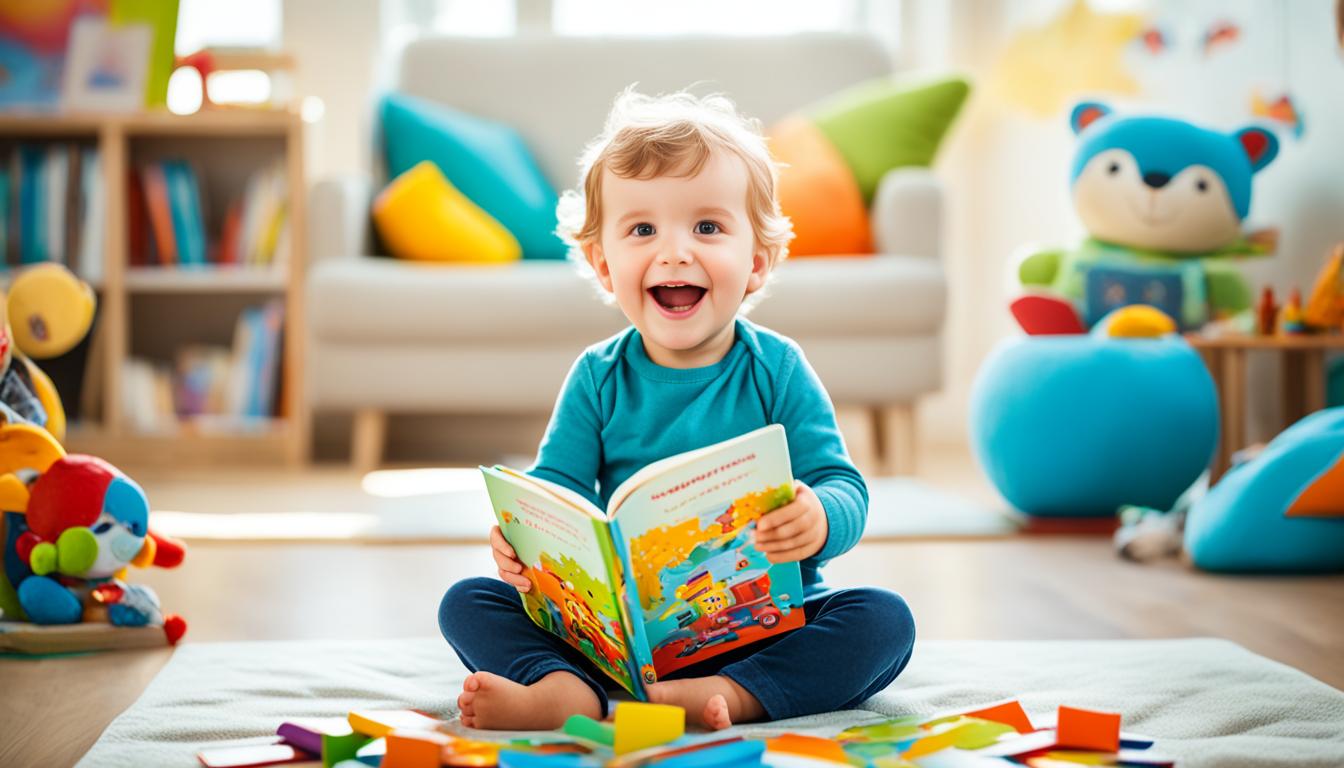Activities to strengthen the bond between parent and child are a fantastic way to build strong connections and make lasting memories as a family. These activities are essential for enhancing the relationship between parents and children, which in turn promotes positive mental health and overall well-being. By participating in enjoyable and meaningful activities together, parents can create memories that will last a lifetime and develop a solid bond with their children. Let’s discover some thrilling bonding ideas that you can incorporate into your everyday routine.
Imagine a sunny weekend morning, where the warm rays of the sun filter through the curtains, signaling the start of a new day. As you wake up, you hear the contagious laughter of your children echoing down the hallway. You know it’s going to be a special day filled with love and laughter.
With a smile on your face, you walk into the kitchen and invite your little ones to join you in preparing a delicious homemade breakfast. As you crack the eggs and mix the ingredients, you teach them the art of cracking an egg without getting any shells in the bowl. They giggle with excitement as they try their best to replicate your expert technique.
While the pancakes sizzle on the stove, you gather around the kitchen table and engage in casual conversation. As you share stories of your childhood adventures, you notice the happiness radiating from your children’s faces. These simple moments of togetherness and connection set the tone for the day ahead.
After enjoying a delicious breakfast, you decide to venture outdoors for a family adventure. The park beckons with its sprawling green fields and inviting playground. As you walk hand in hand with your children, you feel a sense of joy and contentment in their presence.
At the playground, you join them on the swings, feeling the rush of air against your face as you soar through the sky. Laughter fills the air as you engage in a friendly race down the slides, your heart racing with the excitement and thrill of the moment. These simple acts of play and laughter1 not only strengthen the bond between parents and children but also contribute to their overall development. Through play, children improve their concentration, enhance social interactions, and build emotional intelligence.1
As the sun begins to set, you make your way back home, feeling a sense of fulfillment and gratitude for the beautiful day you’ve shared. With the stars twinkling in the night sky, you gather on the porch, wrapped in cozy blankets, ready to embark on another adventure together: stargazing.
As you gaze up at the vast expanse of the cosmos, your children’s eyes widen in wonder and curiosity. Guided by your stories and shared knowledge, you point out constellations and share ancient myths, sparking their imagination. In this moment, you realize the power of shared experiences and the lasting impact they have on the parent-child bond.
Key Takeaways:
- Parent-child bonding activities promote positive mental health and overall wellbeing.2
- Playful activities strengthen the bond between parents and children, enhancing concentration, social interactions, and emotional intelligence.1
- Shared experiences such as cooking together, playing at the park, and stargazing foster deep connections between parents and children.
- Engaging in bonding activities creates lasting memories and builds a strong parent-child bond.
- Embrace the power of parent-child bonding activities and cherish the moments spent together.
The Importance of Parent-Child Bonding
Bonding with your child is crucial for their overall development and mental wellbeing. Engaging in parent-child bonding activities triggers the release of oxytocin, the “love hormone,” which promotes relaxation and reduces stress and anxiety in both parents and children.
Research has shown that children with a secure attachment to their parents are more likely to have positive outcomes in adolescence and adulthood3.
These bonding activities not only strengthen the bond between parents and children but also contribute to the child’s social, emotional, and cognitive development.
Reading together is a powerful bonding activity that promotes stronger parent-child bonds and contributes to the child’s overall development in a nurturing environment3.
Involving children in cooking activities is another fruitful way to enhance the parent-child bond. It fosters teamwork and introduces practical life skills, creating enjoyable shared experiences3.
Furthermore, active listening is crucial for strengthening the parent-child relationship. By showing genuine interest in understanding and connecting with the child, parents demonstrate their commitment to the bond3.
Celebrating a child’s achievements, no matter how small, can have a significant impact on their overall well-being and the parent-child bond3. Recognizing and acknowledging their accomplishments fosters a sense of pride and support, creating a positive emotional connection between parent and child.
By prioritizing parent-child bonding activities, parents can create a nurturing and supportive environment for their children to thrive3.

The Power of Play in Child Development
Play is an integral part of child development, playing a crucial role in fostering creativity, enhancing social skills, and promoting overall well-being. Research shows that play can improve children’s abilities to plan, organize, get along with others, and regulate emotions4. Unfortunately, the amount of time children spend playing has been declining due to tightly structured schedules, fewer safe places to play, and increasing screen time4. That’s why it is more important than ever to prioritize play-based learning and unstructured playtime.
Play-based learning has been recognized and supported by numerous studies, emphasizing its benefits in child development. According to the Hechinger Report, twenty-six studies have highlighted the positive outcomes of play-based learning5. Dr. Laura Schultz, an Associate Professor of Cognitive Science at MIT, further highlights the remarkable relationship between play and learning, specifically how play impacts cognitive development in children5.
Play not only promotes cognitive development but also fosters creativity through imaginative play. When children engage in play, they fuel their imagination and explore the world around them in a fun and engaging manner. This creativity can lead to new discoveries, problem-solving skills, and the ability to think outside the box.
“Play is the highest form of research.” – Albert Einstein
In addition to fostering creativity, play also enhances social skills. Through play, children learn to interact with others, take turns, negotiate, and resolve conflicts. Play provides a safe and supportive environment for children to practice these skills and develop a sense of empathy and teamwork. By incorporating play into parent-child bonding activities, parents can further strengthen the social connection with their children and promote positive social development.
Moreover, play is essential for children’s emotional well-being. It allows children to express their emotions, cope with stress, and build emotional intelligence. Pediatricians are beginning to recognize the importance of play and may even start prescribing play during well-child visits4. By encouraging play and providing opportunities for unstructured playtime, parents can support their children’s emotional development and help them navigate the ups and downs of life.
Overall, play is a powerful tool in child development, fostering creativity, enhancing social skills, and promoting emotional well-being. Incorporating play into parent-child bonding activities not only strengthens the parent-child bond but also creates a joyful and meaningful connection that will last a lifetime.

30 Parent-Child Bonding Activities for Toddlers and Pre-schoolers
Engaging in parent-child bonding activities is a wonderful way to strengthen your bond and create lasting memories with your toddlers and pre-schoolers. These activities provide an opportunity for quality time and meaningful connections with your little ones. Here are 30 exciting ideas to enhance your parent-child bond:
- Explore sensory play: Engage your child with playdough, sand, and water, allowing them to explore different textures and stimulate their senses.
- Enjoy storytime: Read books together and have cuddle time. This promotes language development and gives your child the attention they crave.16)
- Engage in song-time and nursery rhymes: Singing and reciting nursery rhymes not only stimulate endorphin release but also support language and social skills development.16)
- Create art masterpieces: Encourage creativity by painting, coloring, crafting, and solving puzzles together. This promotes mindfulness and strengthens your bond.17)
- Embark on outdoor adventures: Go on nature walks, have picnics, or play hide and seek in the park. Engaging in outdoor activities improves positive mental health and physical well-being for both parents and children.17)
- Cook or bake together: Involve your child in the kitchen, teaching them essential life skills while creating delicious treats.6
- Play car games: Make travel fun by playing games like I-Spy or completing nursery rhymes. Turn your car journeys into bonding experiences.6
- Embrace imaginative play: Enter your child’s imaginative world and engage in role-play activities, fostering their creativity and strengthening your connection.6
- Have fun at the playground: Actively participate in playing with your child at the playground, creating precious memories and strengthening the parent-child relationship.6
- Sing songs together: Singing songs creates a joyful experience and enhances the connection between parents and children. It’s a beautiful way to bond and create lasting memories.6
- Take a stroll and explore: Go for walks and explore new areas together, allowing for quality time and improving the emotional connection between parents and children.6
- Engage in sensory activities: Join your child in playdough sessions or other sensory activities to boost creativity and enhance your parent-child interaction.6
- Create lasting memories with dancing: Dance and march to music, creating a joyful and playful connection with your child.6
- Enjoy floor play activities: Dive into puzzles and stacking games to strengthen the parent-child bond, providing valuable learning experiences.6
- Tickle and laugh together: Tickles can be a fun game or a reward during play activities, bringing joy to both you and your child.6
- Play musical instruments: Engage in music-making activities with your child, fostering a deeper connection and enhancing your relationship.6
- Look at old photos and reminisce: Take the time to cherish memories and reflect on shared experiences, creating a sense of belonging and strengthening your bond.6
- Build forts and create playful spaces: Construct forts or imaginative play areas, allowing for imaginative and immersive experiences with your child.6
- Give hugs and cuddles: Embrace physical affection, offering warmth and security to your child, reinforcing your bond.
- Encourage acts of kindness: Promote empathy and compassion through acts of kindness, such as helping others or making cards for loved ones.1
- Set up a bedtime routine: Establish a consistent routine for bedtime, including warm baths, cuddle time, and storytelling. This daily ritual helps reconnect with your child and strengthens your bond.1
- Play games together: Enjoy board games, puzzles, or outdoor games as a way to bond and have fun together.
- Attend library storytime: Visit the library and participate in storytime sessions, fostering a love for reading and strengthening the parent-child relationship.1
- Have a family movie night: Watch classic cartoons or movies together, sharing cultural references and creating cherished memories.7
- Discover nature together: Go on adventures to explore the wonders of nature, fostering a deep connection with the natural world and each other.17)
- Teach practical life skills: Involve your child in cooking, woodworking, or other hands-on activities, promoting skills development and bonding.7
- Play sports together: Engage in physical activities like kicking a ball, throwing a frisbee, or riding bikes to promote an active lifestyle and strengthen your bond.7
- Plant a garden: Embark on a gardening journey with your child, nurturing plants together and observing their growth, fostering teamwork and connection.
- Take on DIY projects: Engage in simple do-it-yourself projects, sparking creativity and collaboration while strengthening your bond.
- Enjoy picnics: Plan regular picnics in the park or even in your own backyard, providing an opportunity for quality time and relaxation.7
Remember, the key to successful parent-child bonding activities is to be present, patient, and receptive to your child’s interests. Choose activities that align with their age, abilities, and preferences, ensuring that the experience is enjoyable for both of you. These bonding moments will create a strong foundation for your relationship and cherished memories that will last a lifetime.

Bedtime Rituals for Bonding and Connection
Bedtime rituals provide an excellent opportunity for bonding and connection between parents and children. Establishing a consistent bedtime routine, including a warm bath, cuddle time, and storytelling, can help create a sense of security and emotional closeness1. This time allows parents to connect with their children on a deeper level and is an opportunity to express love and care before the day concludes. Embracing and cherishing these bedtime rituals can strengthen the parent-child bond and create lasting memories.

Importance of a Warm Bath
A warm bath before bedtime not only promotes relaxation but also serves as a sensory experience that calms the mind and body1. The warm water soothes tired muscles and helps children unwind, making it easier for them to transition into a restful sleep. This special time together allows parents to connect with their children in a peaceful and nurturing environment.
Cuddle Time for Connection
Cuddle time before bed is a cherished moment for both parents and children1. It provides an opportunity to physically express love and affection, strengthening the bond between them. Snuggling up together promotes feelings of warmth, security, and comfort, creating a sense of emotional closeness that children crave. This simple act of closeness can bring solace to both parents and children, fostering a deep connection.
The Power of Storytelling
Storytelling before sleep has numerous benefits for children’s development and the parent-child bond1. Reading stories introduces children to new concepts, language, and pre-reading skills8. It ignites their imagination, enhances their vocabulary, and cultivates a love for reading. Through storytelling, parents can spend quality time with their children, creating a calm and intimate space for shared experiences and meaningful conversations. This ritual strengthens the parent-child bond and sparks a lifelong love of reading.
Creating a Consistent Routine
A consistent bedtime routine provides structure and security for children, allowing them to feel safe and prepared for sleep8. When bedtime becomes predictable, children can better regulate their emotions and transition into a peaceful slumber. Routines like brushing teeth and putting on pajamas teach children valuable self-care skills and foster a sense of independence8. The repetition of these activities reinforces the caring role of parents, expressing love and pride in their child’s well-being8. By establishing and maintaining a consistent routine, parents create an environment that promotes healthy sleep patterns and strengthens the parent-child bond.
Creating Lasting Memories
Bedtime rituals provide parents with the opportunity to create lasting memories with their children1. These shared experiences carry immense emotional value and contribute to the parent-child bond. From the warm baths and cuddle time to the stories shared, these bedtime rituals become cherished moments that children will remember fondly as they grow older. By prioritizing bedtime connection and bonding, parents can build a strong foundation of love and security that will continue to shape their relationship throughout their lives.
| Benefits of Bedtime Rituals | References |
|---|---|
| Promote relaxation and reduce stress and anxiety1 | 1 |
| Strengthen the parent-child bond1 | 1 |
| Promote language development and pre-reading skills through storytelling18 | 18 |
| Teach self-care skills and foster independence8 | 8 |
Creative and Artistic Bonding Activities
Engaging in creative and artistic activities together can foster a strong parent-child bond and create beautiful memories. Painting, coloring, and craft activities not only encourage creativity but also provide an opportunity for mindfulness and being present in the moment. These activities stimulate the imagination and allow children to express themselves creatively, while parents can build a deeper connection with their children through shared experiences.
Painting is a versatile activity that promotes parent-child bonding through creativity and self-expression. Whether it’s using watercolors, acrylics, or finger paints, the act of painting together allows parents and children to explore their artistic abilities and forge a closer bond. As you dip your paintbrushes into vibrant colors and create imaginative artwork side by side, you are fostering a sense of togetherness and mutual enjoyment of the creative process9.
Similarly, coloring provides a calming and meditative experience that brings parents and children together. By sitting down with coloring books filled with intricate designs or simply drawing on blank pages, you can share moments of quiet introspection while reveling in the joy of artistic expression. The simple act of coloring can spark conversations, encourage storytelling, and create a tranquil atmosphere conducive to bonding9.
Craft activities offer endless possibilities for parent-child bonding and creativity. From making intricately designed greeting cards to building models from recycled materials, these activities promote imaginative thinking, problem-solving skills, and fine motor development in children. By working collaboratively on craft projects, parents and children strengthen their bond while creating unique and tangible works of art together9.
Engaging in creative and artistic bonding activities also encourages mindfulness. By focusing on the present moment and the act of creation, both parents and children can experience a sense of calm and mental clarity. The creative process allows you to let go of distractions and connect deeply with your child, fostering a mindful and peaceful atmosphere in which your bond can flourish9.
So why not grab your paintbrushes, coloring pencils, or craft supplies and embark on a journey of creativity and bonding with your child? These artistic activities will not only stimulate your imagination but also strengthen your parent-child connection and create cherished memories that will last a lifetime. Embrace the joy of creativity and watch as your relationship with your child blossoms through the power of artistic expression and shared experiences9.

Outdoor Adventures for Parent-Child Bonding
Exploring the outdoors together is a fantastic way to bond with your child and create unforgettable experiences. Outdoor activities offer a myriad of opportunities for connection and adventure while allowing you to connect with nature and create lasting memories.
One exciting outdoor activity for parent-child bonding is stargazing. Find a quiet spot away from city lights, lay a blanket on the ground, and gaze at the starry night sky with your child. It not only sparks curiosity but also provides a peaceful and awe-inspiring experience that fosters a sense of wonder and appreciation for the universe. Stargazing allows you to connect with your child while fostering an interest in astronomy and the natural world around us10.
Another enjoyable and simple outdoor bonding activity is to have a picnic in the park. Pack a delicious spread of snacks and your child’s favorite foods, and find a picturesque spot to enjoy a meal together. Picnics provide an opportunity to relax, unwind, and connect with nature, all while savoring tasty treats and engaging in meaningful conversations with your child. Additionally, being in nature can have a positive impact on your mental well-being and overall happiness11.
If you’re feeling more adventurous, consider camping as a valuable activity for parent-child bonding. Camping allows you to disconnect from technology and immerse yourself in the natural world. Set up a tent in your backyard or explore nearby campgrounds, and embark on a journey of new challenges and experiences with your child. Camping fosters resilience, problem-solving skills, and the ability to adapt to different environments. It’s also an excellent opportunity to limit screen time and encourage quality family time1011.
Connecting with nature through outdoor adventures offers numerous benefits for both parents and children. Research indicates that spending time in nature strengthens relationships between parents and children, fostering a deeper connection and sense of closeness11. By engaging in outdoor activities such as stargazing, picnics, and camping, you provide your child with opportunities to develop essential skills, explore their surroundings, and cultivate a love for the natural world.

Take advantage of the wonders that nature has to offer, and embrace outdoor adventures with your child. Whether you’re marveling at the stars, savoring a delicious picnic, or embarking on a camping trip, the time spent together in nature will create cherished memories and strengthen your parent-child bond.
Acts of Kindness and Community-Building
Engaging in acts of kindness with your child can contribute to both bonding and community-building. By involving your child in helping others, whether it’s baking treats for a local charity or sending cards to nursing home residents, you not only promote empathy and compassion but also strengthen the bond between parent and child. Research indicates that acts of kindness can reduce stress and boost optimism for both parents and children1. The act of giving back together fosters meaningful connections and a sense of shared purpose in the community.
One wonderful way to bond through acts of kindness is by involving your child in sending cards to loved ones or those in need. Whether it’s a birthday card, a thank-you note, or a get-well card, the act of creating and sending thoughtful messages promotes empathy and teaches your child the importance of connecting with others1.
“Engaging in acts of kindness with your child can contribute to both bonding and community-building.”
Another fantastic way to bond through acts of kindness is by baking together. By preparing treats for others, such as cookies or muffins, you and your child can spread joy and deliciousness to neighbors, friends, or your local community. Baking not only encourages creativity and fosters a sense of accomplishment but also teaches valuable skills and promotes togetherness1.
Acts of kindness not only strengthen the bond between parent and child but also create a ripple effect of positivity in the community. By involving your child in helping others, you cultivate their understanding of the importance of empathy and compassion, instilling lifelong values that contribute to a better society.

References:
- 1 Research indicates that engaging in acts of kindness can reduce stress and boost optimism for both parents and children, promoting bonding and overall wellbeing. It also fosters empathy and compassion, instilling lifelong values. (source)
Bonding Through Playful Physical Activities
Engaging in playful physical activities with your child is not only a fun way to spend time together but also promotes physical fitness and strengthens your parent-child bond. When you actively participate in activities such as playing catch, building forts, and dancing, you create shared experiences that foster a deeper connection and create lasting memories. These activities provide an opportunity for you and your child to enjoy each other’s company, laugh, and have fun.
Remember, it’s not about being the best or most skilled; it’s about the joy of spending time together.
Playing catch is a classic activity that encourages physical activity and coordination. Whether you’re tossing a ball back and forth in the backyard or playing a game of catch at the park, this simple activity promotes teamwork, communication, and hand-eye coordination. It’s a great opportunity for you and your child to engage in friendly competition and celebrate each other’s successes.
Building forts is another exciting bonding activity that allows for creativity and imaginative play. Gather blankets, pillows, and other household items to construct a cozy fort in your living room or backyard. This collaborative endeavor encourages problem-solving skills, communication, and teamwork as you work together to design and build your fortress.
Dancing is a joyful and expressive activity that not only promotes physical fitness but also allows for emotional expression and creativity. Put on your favorite tunes and let loose on the dance floor, whether it’s in your living room or during a spontaneous dance party in your kitchen. Dancing together creates a sense of joy, laughter, and connection as you move to the rhythm of the music.
- Playing catch
- Building forts
- Dancing
Engaging in physical play releases endorphins that contribute to positive mood and overall well-being for both you and your child. These endorphins, often referred to as “feel-good” hormones, can enhance your emotional bond and create a sense of happiness and contentment.
By incorporating these playful physical activities into your bonding time, you are not only promoting your child’s physical fitness but also creating precious memories and strengthening your parent-child bond. Remember, it’s not about perfection or skill; it’s about the genuine connection and joy that comes from participating together.

| Physical Activity | Benefits |
|---|---|
| Playing catch | Promotes coordination, teamwork, and communication |
| Building forts | Enhances problem-solving skills and encourages collaboration |
| Dancing | Improves physical fitness, emotional expression, and creativity |
Engaging in physical activities and play with your child provides a unique opportunity for bonding. These activities not only benefit your child’s physical health but also contribute to their social and emotional development. By prioritizing playful physical activities, you are fostering a strong and active parent-child bond that will create lasting memories and a foundation for lifelong connection.
So, grab a ball, build a fort, or have a dance party! Enjoy the physical activities that bring you and your child closer together and create moments of pure joy and connection.
Reference:12
Sharing Memories and Reflections
Taking the time to look at old photos and reminisce about shared memories is a powerful bonding activity. It allows parents and children to reflect on past experiences, cherish memories, and create a sense of belonging.

Through this activity, parents can share stories, laughter, and emotions with their children, strengthening their connection and building a positive family identity. It’s an opportunity to cherish memories and create a sense of togetherness.
Looking at old photos evokes nostalgia and can spark conversations about significant events, milestones, or family traditions. It’s a chance to reminisce about memorable vacations, fun family outings, or heartwarming moments captured in snapshots.
“The best thing about a picture is that it never changes, even when the people in it do.” – Andy Warhol
These shared moments not only bring joy and laughter but also deepen the bond between parents and children. Reflecting on past experiences facilitates open communication, encourages shared emotions, and reinforces the family’s sense of unity.
Whether flipping through a photo album, digital gallery, or a social media feed, taking the time to look at old photos and reflect on cherished memories creates a unique opportunity for connection and appreciation.
Creating Lasting Memories with your Family
In addition to looking at old photos, there are various ways to create lasting memories with your family:
- Plan special outings or adventures together, such as visiting a favorite park, exploring a museum, or going on a road trip to a nostalgic location. These experiences create shared memories that can be cherished for years to come.
- Organize family game nights, where you play board games, card games, or engage in friendly competitions. These moments of fun and laughter become treasured family memories.
- Celebrate special milestones and occasions with personalized traditions. Whether it’s an annual family reunion, a unique birthday celebration, or a holiday tradition, these rituals create a sense of continuity and strengthen family bonds.
Reflection Day: Fostering Connection and Togetherness
Consider implementing a “Reflection Day” into your family routine. Reflection Day can happen after the New Year and a few times around June and August, serving as a dedicated time for reflection, sharing, and introspection.
During Reflection Day, carve out quality time to discuss meaningful topics and ask reflection questions as a family. You can create a cozy atmosphere by gathering around the dinner table or finding a quiet spot where everyone can share their thoughts and experiences.
Whether reflecting after a trip, on fun or challenging times, or after serving together as a family, these moments of shared introspection deepen the parent-child bond and foster a sense of belonging.
“Reflection is one of the most underused yet powerful tools for success.” – Richard Carlson
There are many ways to enjoy the reflection questions during Reflection Day. You can answer them over dinner, cut out each question into strips and place them in a jar for random selection, or keep a Reflections Journal to record your responses. The journal can be continued annually, creating a chronicle of your family’s growth and shared experiences.
For younger children, adapt the reflection questions to their age, focusing on shorter questions that still encourage deep thinking and self-expression. This allows them to participate fully in the reflection process and contribute their unique perspectives.
Printable resources are available for the 30 family reflection questions, making it easy to incorporate Reflection Day into your family routine and promote meaningful connections.
Enhancing Emotional Connections through Reflection
Engaging in reflection activities, whether through looking at old photos or participating in Reflection Day, enhances emotional connections between parents and children. Through reflection, family members deepen their understanding of one another, broaden their perspectives, and cultivate empathy.
Research from highlights that by embracing reflection as a regular practice, both parents and children can create lasting memories and strengthen their emotional intelligence. Maintaining a Parent-Child Journal is one effective way to foster emotional connections, improve communication skills, and cultivate mutual respect within the family.
“In the end, it’s not the years in your life that count. It’s the life in your years.” – Abraham Lincoln
So, take the time to look at old photos, reminisce about shared memories, and engage in reflection activities with your family. By doing so, you’ll deepen your bond, cherish meaningful experiences, and create a sense of belonging that will last a lifetime.
| Benefits of Reflective Activities | Reference |
|---|---|
| Enhances emotional connections | 13 |
| Strengthens parent-child bond | 13 |
| Promotes shared introspection | 14 |
| Fosters deep understanding and empathy | 13 |
Embracing Everyday Moments for Bonding
Everyday moments provide numerous opportunities for parent-child bonding. By connecting through these simple activities, you can strengthen your relationship with your child, create lasting memories, and promote their overall development and well-being.
Mealtime Bonding
Sharing meals together is not just about nourishment; it’s also an opportunity for bonding. Studies show that eating meals as a family positively affects children’s physical and mental well-being15. Take the time to sit down together, engage in conversation, and enjoy each other’s company. Whether it’s breakfast, lunch, or dinner, mealtime bonding can foster a sense of connection and closeness.
Setting Boundaries
Setting boundaries is an important aspect of parent-child bonding. Boundaries provide a sense of structure and security, allowing children to understand their roles and responsibilities within the family. Establishing clear rules and responsibilities can help establish order within the household, promoting a sense of collective responsibility16.
Teaching Life Skills
Everyday moments also present an opportunity to teach your child valuable life skills. Whether it’s cooking together, doing chores, or managing finances, involving your child in these activities can instill a sense of purpose and teamwork16. By teaching them essential life skills, you are empowering them to navigate the world with confidence and independence.
Remember, bonding doesn’t always require elaborate activities or special occasions. It’s about connecting with your child in the small, everyday moments. Share daily experiences, engage in meaningful conversations, and show love and support in your everyday interactions. Embrace these moments and make them count.

| Benefits of Embracing Everyday Moments for Bonding | Statistical Data |
|---|---|
| Strengthening the parent-child relationship | 1615 |
| Creating lasting memories | 16 |
| Building a strong bond | 1615 |
| Importance of quality time | 15 |
Conclusion
Strengthening the parent-child relationship through quality time and engaging in meaningful interactions is paramount in building a strong bond and creating lasting memories with your child. Research shows that board games and video games are popular bonding activities for most families, offering an opportunity for fun and connection17. Additionally, activities such as walks, hikes, and picnics or barbecues in the great outdoors provide a refreshing environment for families to bond and build connections17. Artistic endeavors, like creating art together as a family, foster creativity and self-expression while strengthening the parent-child bond17. Sports activities, too, promote teamwork skills and healthy connections within the family unit17.
Moreover, engaging in alternative activities like riding bikes or scooters has become increasingly popular for social bonding and communication among family members17. Finally, watching shows or movies together is a common family bonding activity that allows families to unwind and enjoy quality time as a unit17. By prioritizing these activities and carving out dedicated time for bonding, you can strengthen your parent-child relationship and create unforgettable memories that will last a lifetime18.
FAQ
What are parent-child bonding activities?
Why are parent-child bonding activities important?
How does play impact child development and parent-child bonding?
What are some parent-child bonding activities for toddlers and pre-schoolers?
How can bedtime rituals promote bonding and connection between parents and children?
How can creative and artistic activities strengthen the parent-child bond?
What are some outdoor bonding activities for parents and children?
How can acts of kindness contribute to parent-child bonding?
How can playful physical activities foster parent-child bonding?
How can looking at old photos and reminiscing help strengthen the parent-child bond?
How can parents embrace everyday moments for bonding with their children?
Why is it important to prioritize parent-child bonding activities?
Source Links
- https://parent-list.com/blog/30-easy-parent-child-activities-to-strengthen-your-bond
- https://www.nurturingparenting.com/shop/p/255/strengthening-parent-and-child-bonding-and-attachment-activities-manual-pba/
- https://www.momkindness.com/blogs/news/strengthen-parent-child-bond
- https://www.healthychildren.org/English/family-life/power-of-play/Pages/the-power-of-play-how-fun-and-games-help-children-thrive.aspx
- https://bostonchildrensmuseum.org/learn/the-power-of-play/
- https://onetimethrough.com/joyful-ways-to-connect/
- https://tinybeans.com/father-and-son-activities/
- https://www.mother.ly/child/child-sleep/how-to-use-bedtime-to-bond-with-kids/
- https://www.howdybabybox.com/articles/parenting/activities-for-family-bonding
- https://www.mindchamps.org/usa/blog/5-outdoor-activities-to-bond-as-a-family/
- https://brightchamps.com/blog/outdoor-activities-for-kids/
- https://connectedfamilies.org/family-bonding-activities/
- https://klokbox.com/parent-child-journal-prompts/
- https://inspiredbyfamilymag.com/2020/01/05/family-reflection-day-questions/
- https://www.parents.com/how-to-strengthen-family-bonds-8638693
- https://www.mixbook.com/inspiration/family-bonding-ideas
- https://www.twinscience.com/en/parent-advice/best-family-bonding-activities-to-keep-your-family-happy/
- https://appykids.com/family-bonding-through-play-10-exciting-games-for-parents-and-children-ages-3-8/










